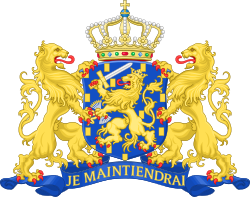Ministers Title/Ministry Term of office Party Dr. Jan Heemskerk (1818–1897) Prime Minister 23 April 1883 – Independent (Liberal Conservative) Minister Interior Jonkheer Joseph van der (1816–1892) Minister Foreign Affairs 23 April 1883 – [Note] Independent (Conservative Catholic ) Baron Marc Willem du Tour (1835–1908) 10 August 1885 – [Ad interim ] Independent (Liberal Conservative) Jonkheer Joseph van der (1816–1892) 14 September 1885 – [Res] Independent (Conservative Catholic ) Jonkheer Abraham van Karnebeek (1836–1925) 1 November 1885 – Independent (Conservative Liberal ) Willem Grobbée (1822–1907) Minister Finance 23 April 1883 – [Res] Independent (Liberal Conservative) Jacobus Bloem (1822–1902) 4 May 1885 – Independent (Liberal Conservative) Baron Marc Willem du Tour (1835–1908) Minister Justice 23 April 1883 – Independent (Liberal Conservative) Johannes van den Bergh (1824–1890) Minister Water Management , Commerce and Industry 23 April 1883 – [Res] Independent (Conservative Catholic ) Frederik Cornelis Tromp (1828–1900) 10 June 1887 – [Ad interim ] Independent (Conservative Liberal ) Jacob Bastert (1826–1902) 11 July 1887 – Independent (Conservative Liberal ) Major general August Willem (1816–1896) Minister War 23 April 1883 – Independent (Conservative Liberal ) Vice admiral Frederik Geerling (1815–1894) Minister Navy 23 April 1883 – [Res] Independent (Liberal Conservative) Willem van (1824–1905) 19 April 1884 – [Res] Independent (Conservative Liberal ) Rear admiral Willem Gericke (1836–1914) 5 August 1885 – [Res] Independent (Liberal Conservative) Frederik Cornelis Tromp (1828–1900) 26 January 1887 – Independent (Conservative Liberal ) Gerard van (1825–1892) Minister Colonial Affairs 23 April 1883 – [Res] Independent (Liberal Conservative) Major general August Willem (1816–1896) 25 November 1883 – [Ad interim ] Independent (Conservative Liberal ) Jacobus Sprenger (1842–1907) 27 Februari 1884 – Independent (Conservative Liberal ) 









